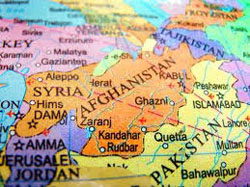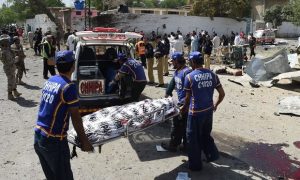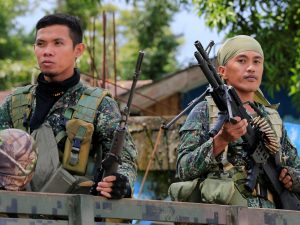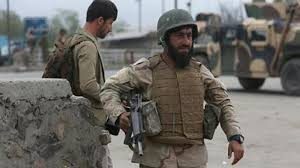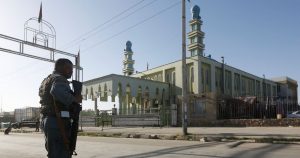The bloody history of Afghanistan’s civil war in the 1980s – how the U.S. “victory” over the Soviets morphed into decades of chaos – is a cautionary tale for today’s Syria, writes ex-CIA analyst Paul R. Pillar, like reported by consortiumnews.com
The battle for Raqqa is now being waged, and the diverse forces that have been helping to extinguish the self-proclaimed caliphate of the so-called Islamic State (ISIS) soon must face squarely what becomes of the portion of Syria that ISIS had controlled.
It may be useful to recall an earlier and somewhat similar situation in which the defeat of a common enemy led not to peace and stability but instead to fighting among the victors. This occurred some two decades ago in another land in which, like Syria, the United States struggles to formulate a strategy: Afghanistan.
After the Soviets withdrew from Afghanistan in 1989, the pro-Soviet Najibullah regime hung on for another three years before succumbing to the militias, known collectively as mujahedin, that with foreign backing (including from the United States) had fought the Soviets throughout the 1980s. This mujahedin victory was followed by an accord providing for a power-sharing arrangement, but the agreement never fully took hold.
The warlords who had been allies in fighting against the Soviets and Najibullah fell out among themselves. A new phase of the Afghan civil war ensued, which for the next few years saw fighting, especially in the cities, that was at least as intense as the decade-long combat against the Soviets.
This phase of the war concluded as a new movement of religious radicals, known as the Taliban and supported by Pakistan, swept aside the brawling militias in most of the country and imposed their own version of order in south and central Afghanistan. The Taliban are, of course, today widely considered to be a principal adversary in Afghanistan of the United States and its allies.
Lessons for Syria
There are obvious differences between this piece of Afghan history and the current situation in eastern Syria, but there nonetheless are several observations about the former that apply as well to the latter.
There was too little advance planning or effort at accommodation that looked beyond whatever was the immediate military objective. This deficiency was at least as true of the United States as of any of the other external or internal participants in either war.
There was no military solution to the differences and disagreements that ensued after the earlier enemy was defeated. No single Afghan militia was strong enough to overpower the rest. Even the Taliban never gained control of all of Afghanistan; a coalition in the northern portion of the country continued to resist.
In Syria, the Assad regime, especially with its Russian and Iranian backing, is not going away. But neither does it have the strength (and its foreign backers do not have the will) to gain control over all Syrian territory and to wipe out the sources of resistance to the regime.
The new phase of civil war (in Afghanistan after the Soviet withdrawal) reflected bloated ambitions and mission creep stimulated by earlier victories, not well-considered objectives that would justify a prolongation of the war. Gulbuddin Hekmatyar was the most destructive of the power-hungry chieftains in Afghanistan, but hardly the only one.
In the Syrian war, echoes of Afghanistan are heard in talk, including in debates on U.S. policy, about moving against the interests of Russia, Iran or the Assad regime as part of a military expedition that was supposed to have been all about defeating ISIS.
The problems, threats and adversaries that emerge from prolongation of the civil war into a new phase may take new forms that are difficult to foresee. In Afghanistan in 1992, as Najibullah’s regime fell and the militia leaders were just beginning their new round of conflict among themselves, it would have been hard to anticipate the Taliban emerging and sweeping to power as it soon would. In Syria, violent extremism bred by chaos and conflict after the fall of Raqqa may take non-ISIS forms for which we do not yet have a label.
Prolonged War
Most important, later problems and security threats have resulted from prolongation of the armed conflict itself, not from specific participants in that conflict winning or losing, or seeing their influence expand or contract. In Afghanistan in the early 1990s, it was not the fortunes of any one warlord or militia that defined the country’s political and security future. It was the violent quarrel among them that gave the Taliban their opening.
The Taliban would not have had their opportunity if power-sharing had been fully and faithfully implemented. In Syria, we already have seen a similar dynamic, in which it was the civil war itself, not the existence of a specific regime or its longstanding foreign alliances, that gave ISIS the opening to score its dramatic gains. The same can be expected with any post-ISIS radical movements.
Despite the differences between the two cases, a major conclusion applying to both is that minimizing future security problems requires de-escalation and accommodation, not prolongation of warfare and mission creep. This specifically means not using the occasion of victory over one enemy to get in some whacks against someone else one considers an adversary.
From the mid-1990s, the subsequent few years of Afghan history saw Al Qaeda’s alliance with the Taliban, 9/11, and a direct U.S. military intervention beginning in late 2001 and continuing, seemingly without end, today. One endless war, with a changing cast of adversaries, is too much; the United States does not need another one in Syria.
